By Ramit Singal
Egrets are beautiful and elegant birds to watch. You’ll often see them standing still over water and, in a flash, using their long, pointed bills to stab a fish or pick out an insect. No matter where you are in India, it is common to see one or many white birds looking for prey in wet fields and water bodies, or flying overhead to roost late in the evening.
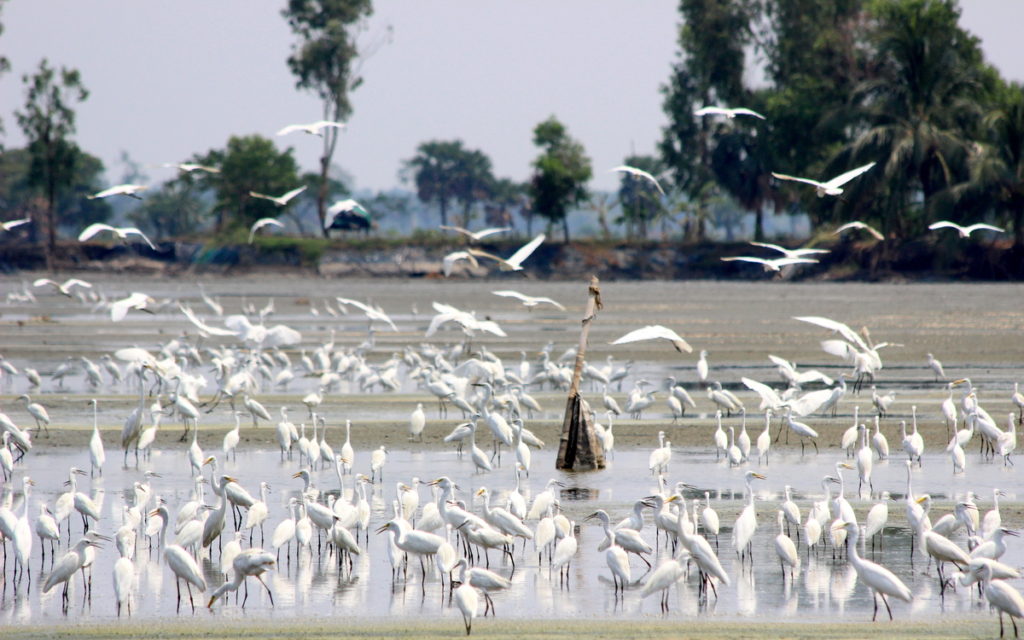
A large flock of egrets © Sourav Maiti (view in checklist)
In spite of being quite common, they are one of the more confusing groups of birds for beginners and experienced birders alike. Although it is easy to identify a bird as an egret, the confusion arises when trying to identify the species itself. The names of egrets (eg Little, Intermediate and Great) tell us much about their size, but they can still be misidentified, especially if they are seen by themselves without a size reference. Luckily it’s not just size alone that matters, and the different egrets have other features that can be used to identify them.
One such feature is their ‘plumes’, which they acquire in the breeding season. These are a a set of long, thin feathers on their back/dorsum, head or breast. Because different species grow plumes on different parts of the body, they can help in identification as well.
Cattle Egret Bubulcus ibis
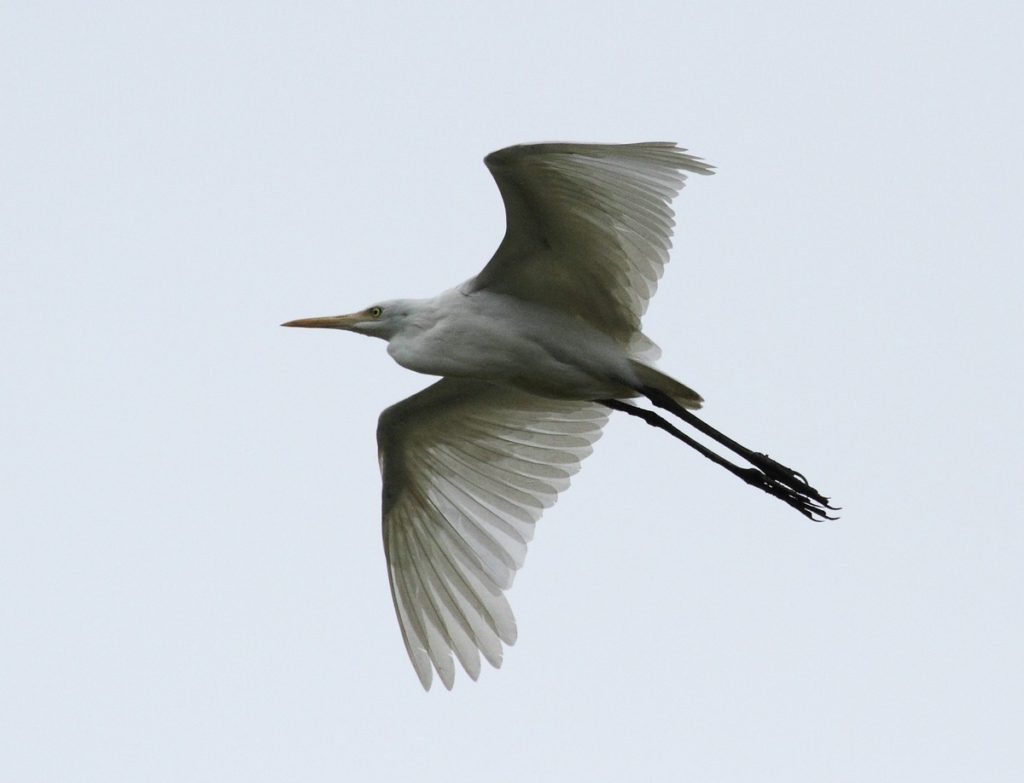
Cattle Egret in flight. Note the small neck, bill shape and size (short bill has a small dip at the tip), relatively smaller wings © Albin Jacob (Checklist)
The Cattle Egret is a ubiquitous and adaptable bird. This is a small and stocky egret, and gets its name from its habit of following cattle and other large animals (also tractors and JCBs!) to pick off any insects they might flush. Equally at home in light woodland, wetlands, farms and garbage dumps, it does not have any particular association with water. The Cattle Egret is worth familiarising oneself with as it is the egret species you are most likely to encounter no matter where you are birding.
| Habitat | Fields (especially if recently ploughed), farms, freshwater wetlands, forest clearings, garbage dumps in urban areas, etc. |
| Size | Smallest of our egrets. |
| Structure | Stocky in build. Large round head with relatively short thick bill, short legs and short, thick neck. |
| Breeding Plumage | Puffy looking head with orange head and neck, as well as orange dorsal plumes. |
| Bill | Blunt and thick, with upper mandible showing distinct dip at the tip. Mostly orange-yellow in all plumages. |
| In flight | Narrower, more pointed wings than other egrets, shorter legs. Relatively faster wing-flapping especially during and a little after take-off. |
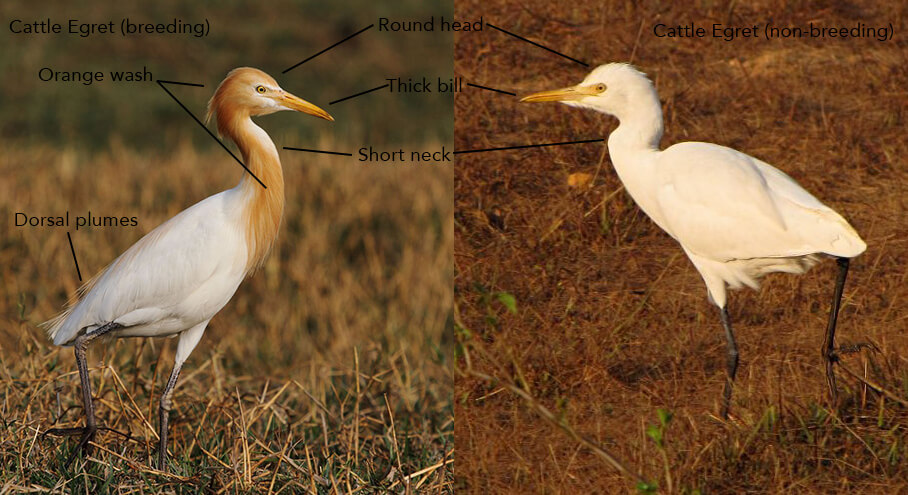
Cattle Egret in breeding plumage (left, © Albin Jacob) and in non-breeding plumage (right, © Ramit Singal)
Additional information: The subspecies that occurs in our region is Eastern Cattle Egret Bubulcus ibis coromandus. The Western Cattle Egret B. i. ibis is smaller with shorter neck and legs as well as a different breeding plumage.
Little Egret Egretta garzetta
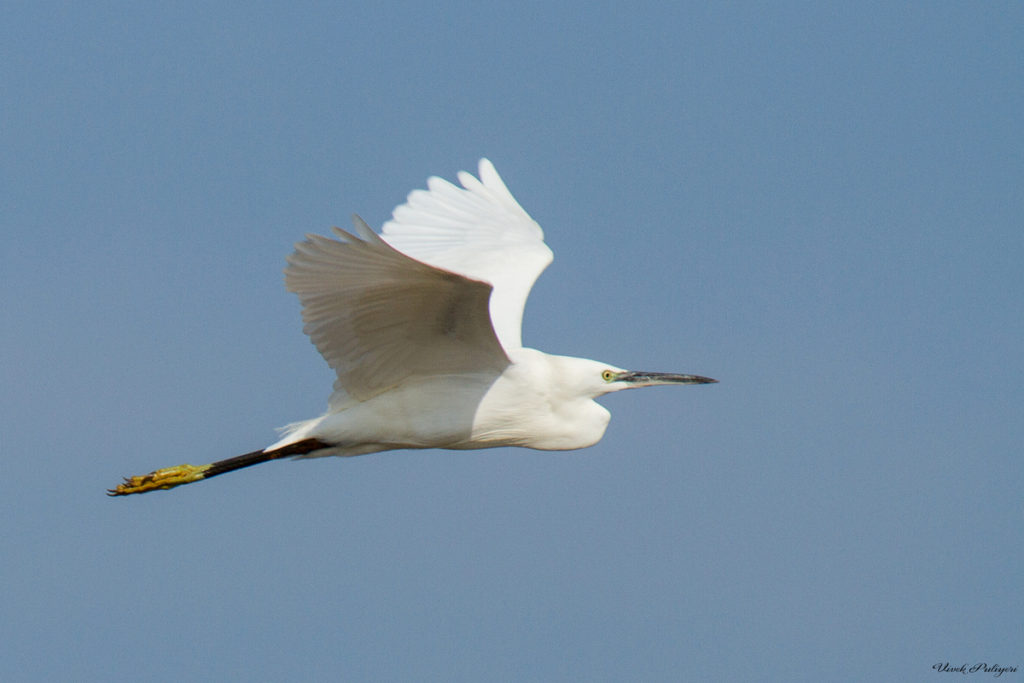
Little Egret in flight, showing its yellow feet © Vivek Puliyeri (Checklist)
The Little Egret is a delicate looking egret which frequents freshwater bodies of all types, including fast-flowing streams, slow-moving rivers, well-vegetated marshes, etc. It is small in size and neat in proportions – making it look quite graceful. Its obvious yellow feet set it apart from the other regularly occurring white egrets (except Western Reef-egret, the white morph of which usually has more extensive yellow on legs, and yellow on bill).
| Habitat | Associated with all water bodies. Typically stays away from coasts, but regular in estuaries. |
| Size | Small-sized, bigger than Cattle but visibly smaller than Intermediate and Great. |
| Structure | Very slender, looks almost delicate with graceful S-shaped neck, oval/triangular head, relatively longer bill. |
| Breeding Plumage | Two long plumes on head and down neck (the only white egret to have these), plumes on the back, on the breast. |
| Bill | Bill remains mostly dark/black in all plumages. In non-breeding plumage, base to lower mandible is visibly paler. |
| In flight | Yellow feet are visible. From similar Western Reef-egret by narrower, more pointed wings. |
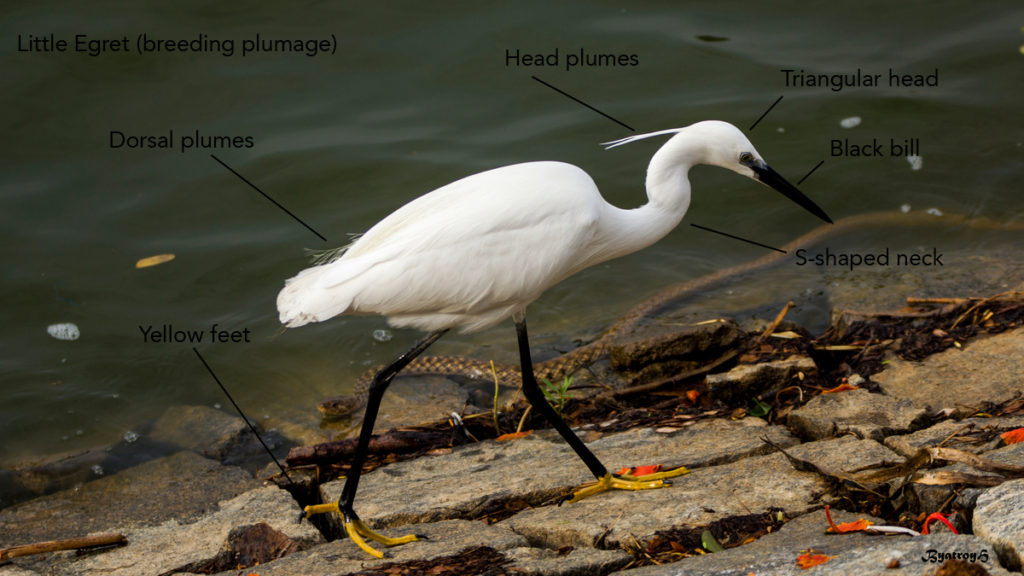
Little Egret in breeding plumage (with a Checkered Keelback in the background). Note the egret’s head plumes, yellow feet, and slender structure but small size © Hemanth Byatroy (Checklist)
Additional information: Unlike several of our other egrets, the Little Egret is quite vocal and usually has a harsh call which it gives out in flight, alarm or for contact. You can listen to it here or here.
Intermediate Egret Mesophyx intermedia
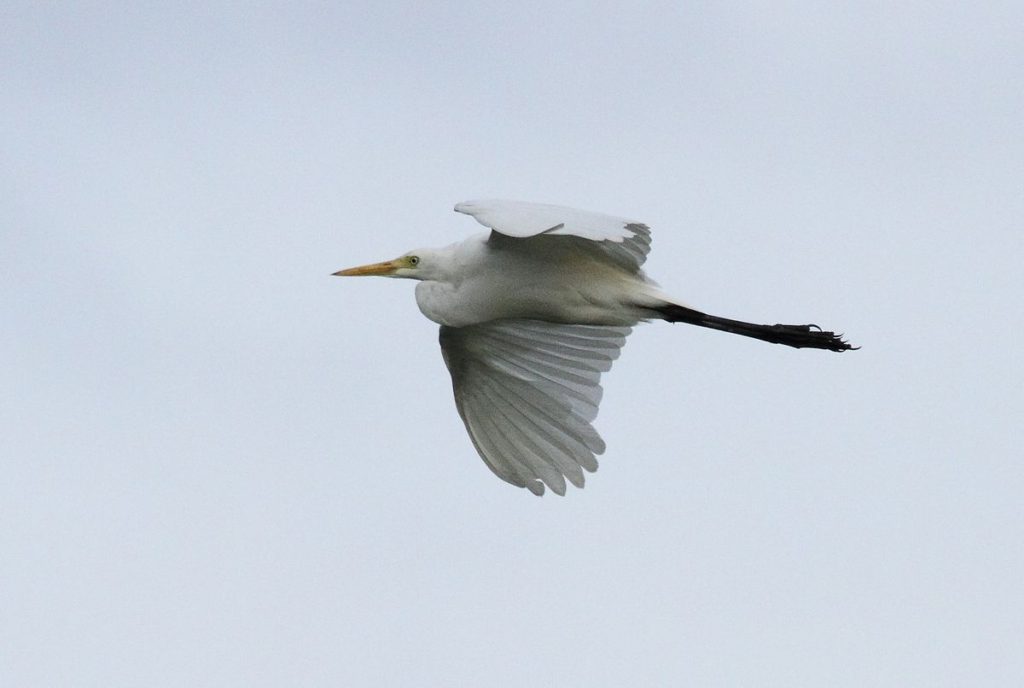
Intermediate Egret in flight. Note the roundish neck fold, short bill, round forehead © Albin Jacob (Checklist)
The most variable looking of our egrets, the Intermediate Egret can appear quite small or quite large when seen in isolation. Though some of the larger individuals may appear as large as Great Egrets, structurally (especially when the neck is retracted), birds may even resemble Cattle Egrets! The Intermediate Egret is a fairly stocky egret, due to its thick neck and large body, which also makes the legs look quite short.
| Habitat | Associated with all water bodies and wet fields, paddies. |
| Size | May look variable in size when viewed in isolation, but usually flocks with other egrets thus making comparison easier. Bigger than Cattle or Little Egret but smaller than Great Egret. |
| Structure | Stocky in build – note proportionally short bill and legs, round head, thick neck and large body (very rear-heavy due to the long tail). |
| Breeding Plumage | Bill becomes black and it attains plumes on the back/dorsum and the breast. |
| Bill | Proportionately shorter bill is yellow in non-breeding plumage and black in the breeding plumage. (Note: Lores are always yellow) |
| In flight | Broad wings and relatively shorter legs than Great Egret. Heavier rear usually apparent. |
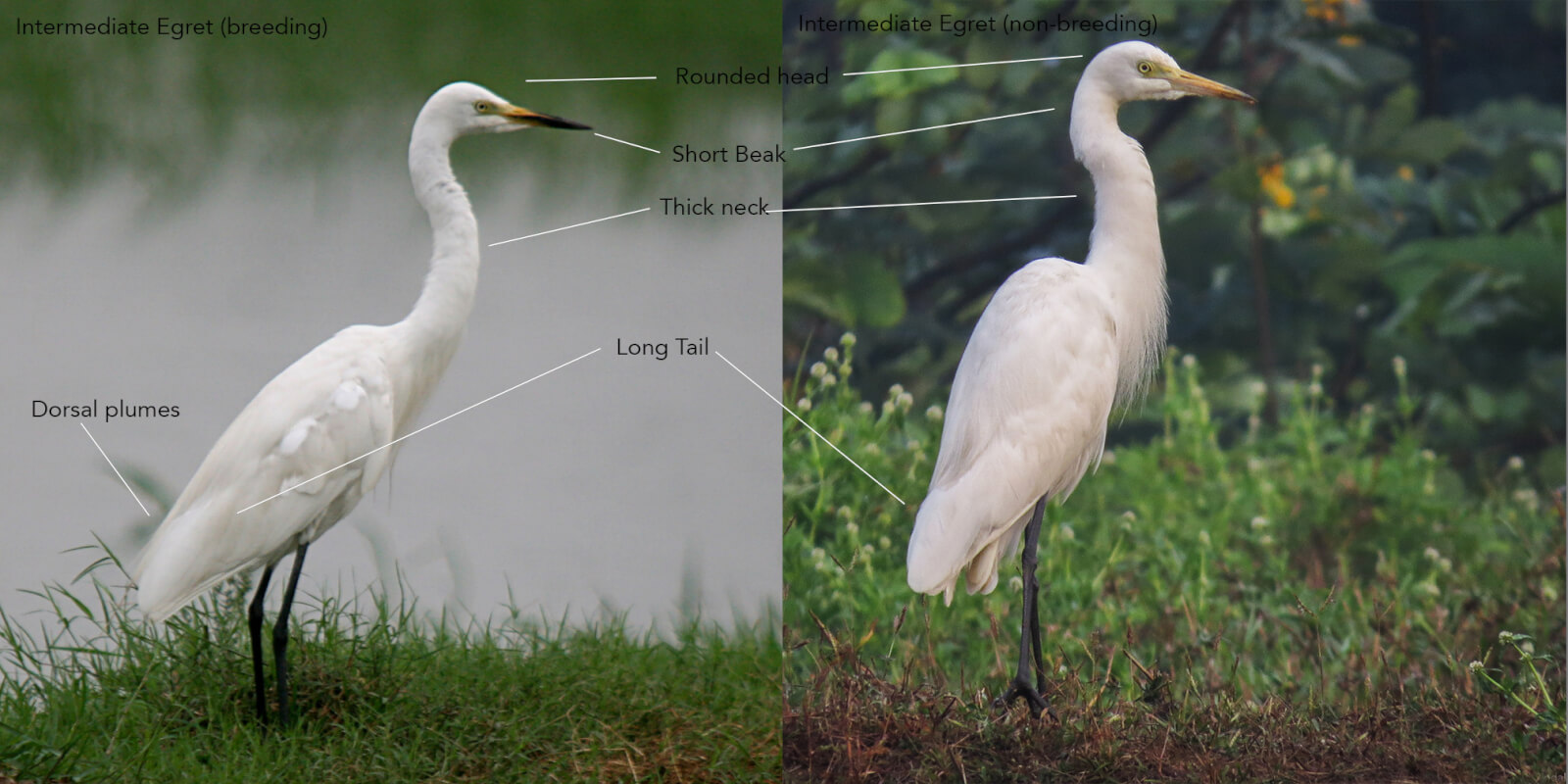
Intermediate Egret in breeding plumage (left) © Dinesh Singal and in non-breeding plumage (right) © Ramit Singal
The bird on the right is transitioning into breeding plumage and thus, has breast plumes.
Great Egret Ardea alba
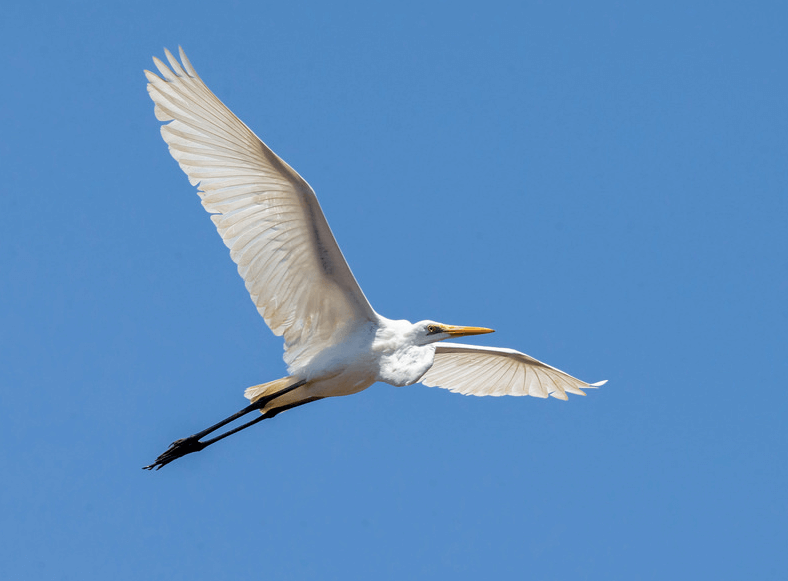
Great Egret in flight. Note long legs and bill, neck is angular when retracted, large wings © David Irving (Checklist)
The Great Egret is the largest of our egrets, with an overall lean look but distinctly heavy legs and bill. It is perhaps more similar to a Purple Heron in structure and jizz than the other egrets.
| Habitat | Associated with all water bodies, preferring slow-moving rivers, lakes and wetlands. |
| Size | Visibly large. |
| Structure | Structurally very lean with long neck showing prominent kink. Forehead is flat and in-line with long bill. Legs are long and body appears short – thus making it look very vertical. |
| Breeding Plumage | Attains plumes only on back/dorsum. |
| Bill | Long bill. Yellow in non-breeding plumage, and black in breeding plumage. |
| In flight | Broad wings and long neck and legs are apparent. Has the slowest, most relaxed flight of all the egrets. |

Great Egret in non-breeding plumage (left) © Palani Andavan Balasubramanian and in breeding plumage (right) © Jayan Thomas
Great vs Intermediate Egret
Several birders often have trouble distinguishing the Intermediate Egret from the Great Egret. Though they are different in size, some female Great Egrets may appear to be only as large and stocky as male Intermediate Egrets. A few features that make identification much easier are:
Image A:
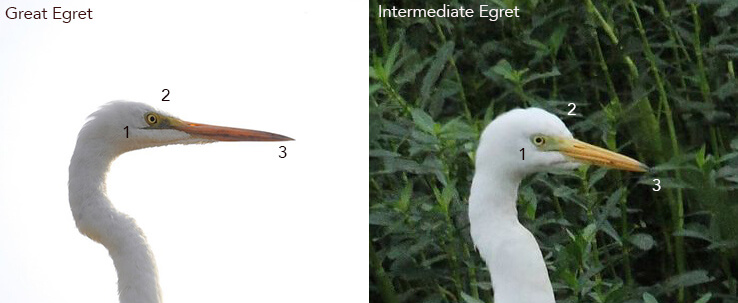
Great Egret (left) © Mittal Gala and Intermediate Egret (right) © Albin Jacob. Note length of gape line (1), shape of forehead (2) and length of bill (3).
Image B:
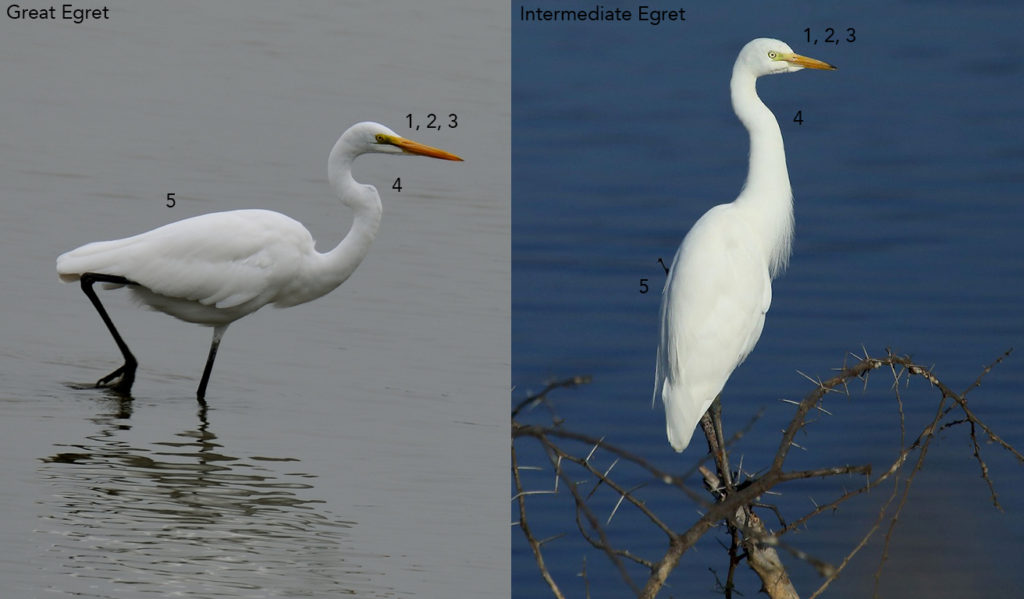
Great Egret (left) © Snehasis Sinha and Intermediate Egret (right) © Albin Jacob. Note shape and size of neck (4) and overall structure (5).
These differences are summarised below:
| Great Egret | Intermediate Egret | |
|---|---|---|
| 1 | Gape extending beyond the eye | Gape ending at/before the eye |
| 2 | Angular head | Round head |
| 3 | Longer bill | Shorter bill |
| 4 | Long neck with a pronounced kink | Thicker, shorter neck |
| 5 | Large, long and lean structure | Stockier, heavy built |
Here is an image that illustrates these differences very well (can you tell which species is which?):
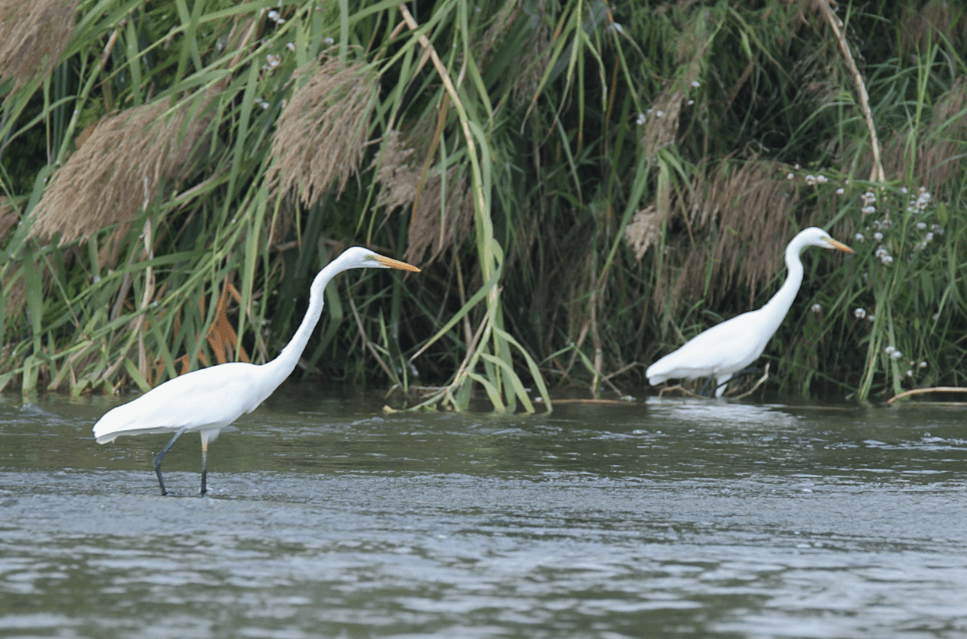
Great Egret and Intermediate Egret © Harshith JV (Checklist)
Intermediate vs Cattle Egret
In certain postures and when direct comparison is not possible, an Intermediate Egret can look quite similar to a Cattle Egret. Below are some pointers on how to distinguish between the two:
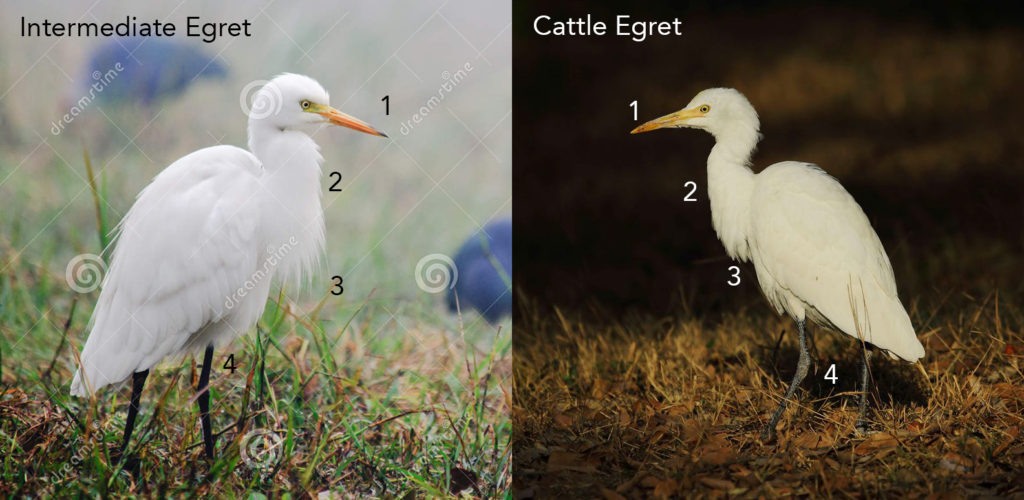
Intermediate Egret (Left) © Dubults | Cattle Egret (Right) © Albin Jacob
| Intermediate Egret | Cattle Egret | |
|---|---|---|
| 1 | Straight bill | Obvious curved tip to bill |
| 2 | Neck retracts a bit deeper | Shorter neck |
| 3 | Breast plumes in breeding plumage | No plumes on the breast. |
| 4 | Proportionally longer legs | Shorter legs |
Note: There will always be times when particular individuals may prove difficult to identify even with the best of views. Some times, one may just not get to see enough of the bird to be able to ID it. It is absolutely OK if that is the case and best to err on the side of caution. On eBird, you may use “White Egret sp.” when conclusive identification is not possible.
Variations and subspecies
Little Egret:
Although as yet unrecorded in our region, the Little Egret has a subspecies nigripes known from as far west as the Sunda Islands and may occur in the Andaman and Nicobar Islands. They can be told apart from the resident garzetta (nominate) subspecies by their dark feet.
Great Egret:
The Great Egret has two subspecies regularly occurring in India. The widespread modesta which is a breeding resident, and the nominate alba which is known to occur in N India during the winters. There is little known about the extent of the range of alba, its population and breeding status in India. One of the reasons is because they can be tricky to tell apart in the field.
Modesta is slightly smaller than alba, but this difference is often difficult to note in the field, and there may be an overlap in the males of modesta and females of alba. Features to look out for instead are the bill, lores, and the legs, are ascertaining these to the time of the year and behaviour (courtship/breeding/non-breeding).
The following table may give us some clues about identifying this species to ssp level using these features in the breeding and non-breeding seasons:
| Great Egret ssp. alba | Great Egret ssp. modesta | |
|---|---|---|
| Lores (non-breeding) | Green yellow to yellow | Yellow |
| Lores (courtship) | Bright green | Varies from pale to olive green |
| Bill (non-breeding) | Yellow | Yellow, sometimes with a dark tip |
| Bill (courtship) | Red with dark tip, turns to black with dull yellow base and red streaking |
Grey-black |
| Legs (non-breeding) | Variable upper legs are generally black with green or yellow tinge. |
Legs and feet are brown to grey-black, and may be two-toned, with the upper leg being lighter than lower leg. |
| Legs (courtship) | Upper legs, and sometimes stripes on the lower leg are pink |
Pink to purplish-red wash on otherwise dark legs |
| Legs (post-courtship) | During the remainder of nesting, the upper leg turns yellow and lower leg dark |
Legs and feet change to black |
In ssp. modesta, bill post-courtship may assume a dual-coloured nature with a yellow base. The iris is yellow in both subspecies, but may appear red in modesta during the courtship period.
Banner Image: Little Egret by Albin Jacob/Macaulay Library from this checklist.
PS: An article with Little Egret and the two Reef-Egrets will be coming soon.
Update: Published here: https://birdcount.in/little-reef-egrets/
Also: Another fantastic article about these egrets here.

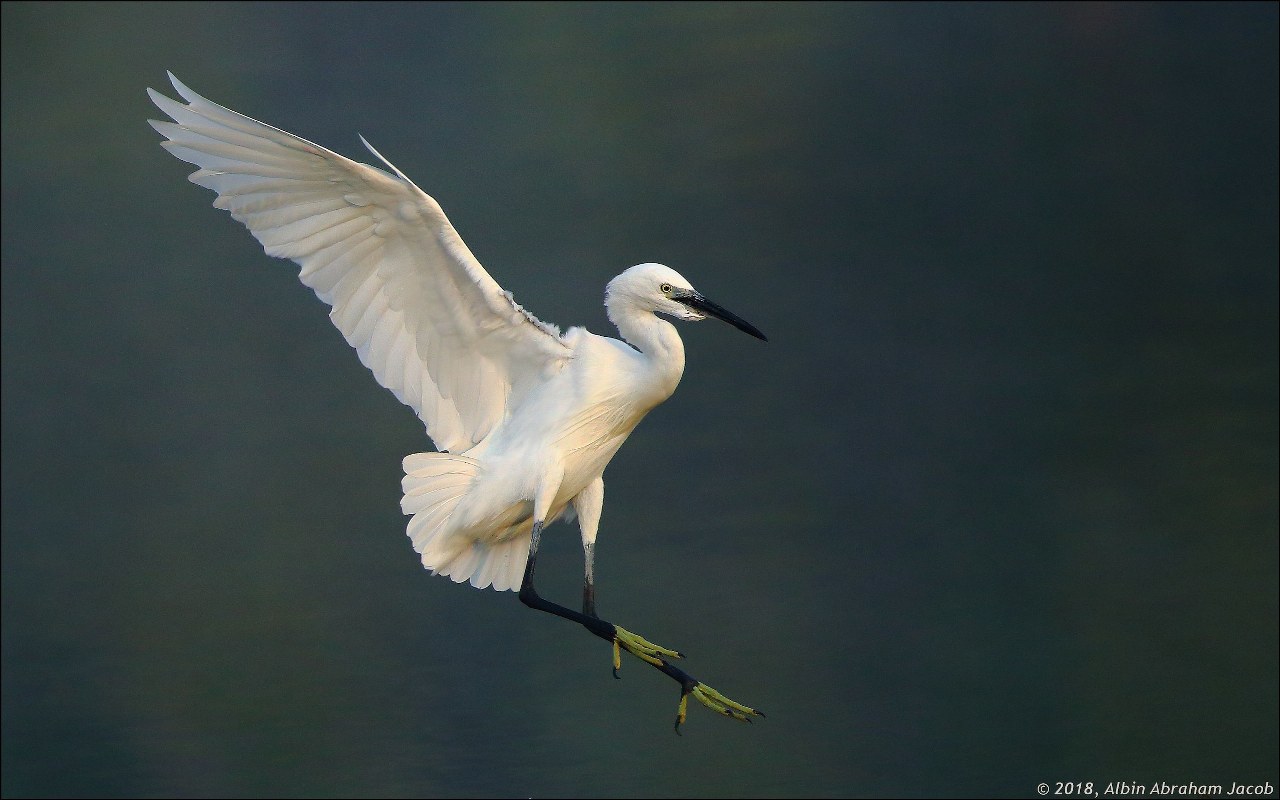
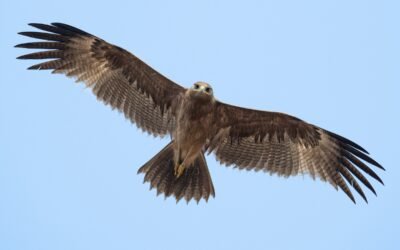
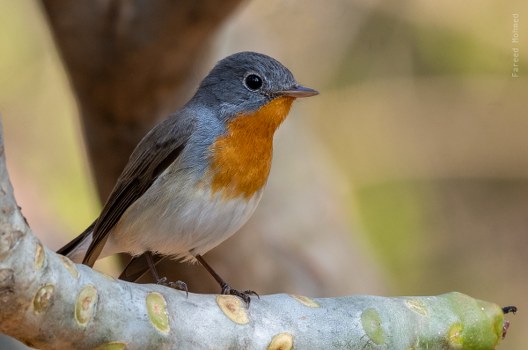
Lovely… Thanks a lot!! Was always confused between egrets..
This cleared the doubt.
Very useful, especially the most challenging intermediate and great egret ID features. Can we have one on little egret and western reef egret white morph, please.
Thank you. An article on Little versus Reef egret coming up soon!
This is a excellent work ! This will help all inexperience birders to separate various Egrets ! I would also request to add Little Egret with Pacific Reef-egret !
Thanks
Thank you. An article on Little versus Reef egret will be coming up soon!
Nice information
Very informative article with good images as well!
nice information
I am sharing two charts of egret prepared 3 year back
https://www.facebook.com/photo.php?fbid=10152465618459432&set=oa.10151548950797411&type=3&theater
https://www.facebook.com/photo.php?fbid=10151829789599432&set=oa.10151548950797411&type=3&theater
Nice pictorial explanation. Thanks for sharing
Thanks a lot for putting it all so painstakingly. It’s a group of birds which normally confuses a lot. Looking forward to white morph of Western reef heron n little egret
Excellent!
colour of the Beak , legs and feet ; make a table and carry it to the field . This helps me ordinary bird watcher
Thanks for sharing
What about Western Reef Egret? it also is confusing ,perticularly the whitw morf.?
Thanks and very useful as ever! Looking forward to more!
Very useful information On all Egrets. Nice pictorial information.
nice , informative article
Want such article in pdf form….
What is the bird on your backgarden feb 2019 bird count poster? I have just seen one in northern cyprus.
It’s a Siberian Stonechat: https://ebird.org/india/species/sibsto1
Hey, I really appreciate your work. And thank you so much, this blog helped a lot in identification. Can you also put some blogs on how to identify warblers? As we all know they are very tricky. So birders like me always keep searching for help for identification.
We do have one article on warblers, and more are in the works. See all our species articles here:
https://birdcount.in/category/species/
Thanks for your comment!
What’s the difference between Egrets and Herons?
Egrets are a kind of Heron (Family Ardeidae).
hello Sir
plz help I see lots of birds
fall from tree and die no food and sometime cat eats them sometime they come user car and die plz help them
Raj
from dehradun
7217294067
Well written article with lucid description made easy to understand
I have a lot of the in the backyard of my house 100sof them live on a huge tree any bird lover is free to call to see the habitat it is a tree in between a overcrowded place,is it ok for them?
Thanks.. this is very helpful. From Sri Lanka.
Too good dear ! Exact points to differentiate are clearly given
THank you so much for the write. This Helps a lot